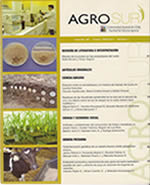The links between the research on pesticides and agroindustrial multinationals: the case of glyphosate
Main Article Content
Abstract
Nowadays, glyphosate is the most used herbicide in the southern cone. Its effects on human health, particularly the carcinogenic ones, are evaluated as far as from the 80s. In 2015, the International Agency for Research on Cancer belonging to the WHO classified it as “probably carcinogenic in humans”. A year later this organism and the FAO concluded that it is improbable that it presents carcinogenic effects. The European Commission, after assuring that it was not detrimental, approved in renewing its license; although there was conclusive scientific evidence as being a probable carcinogenic substance. There are antagonistic ideological positions between the economic interests of the technological and farming development and social movements which question the consolidation of this productive model because of their consequences. These social movements question: what scientific knowledge is generated? who generates it? and how? This work contributes to the debate of those questions, characterizing the production of scientific knowledge in the mainstream of the Web of Science (WOS), linked to the 6 greatest world agroindustrial multinationals: Basf, Bayer, Dow Agroscience, Dupont, Monsanto and Syngenta. The results show delay or generalized absence of analysis of the environmental and human health impacts of glyphosate (1970-2011). Currently, in this frame of worldwide and intensive use of glyphosate a slight increase in the evaluation of its effects was detected but still remains low.

